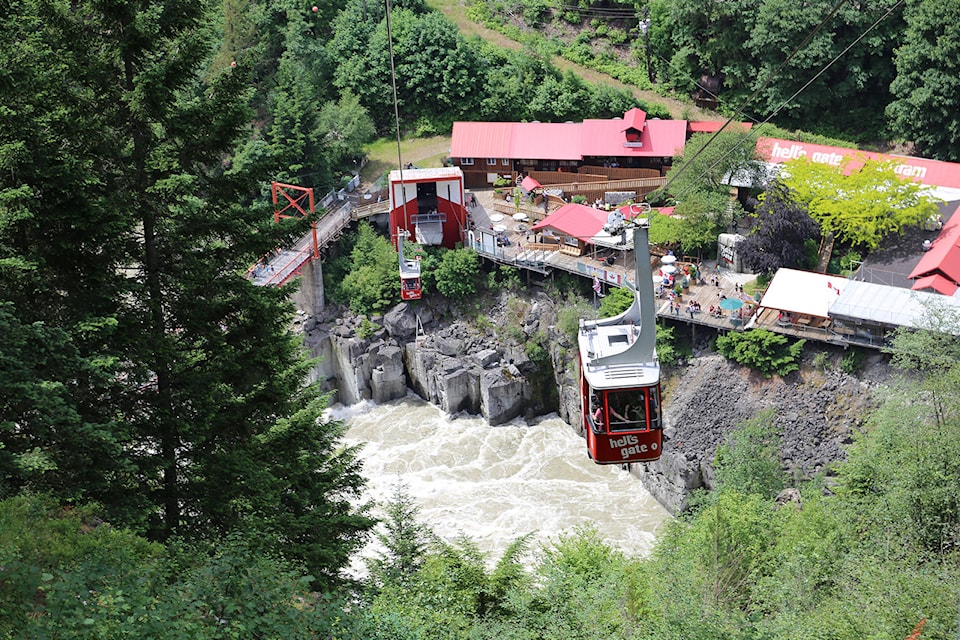The year was 1971 – hard to believe, going back over time to the Charles Hotel dining room at Boston Bar.
Work crews were finishing up on the Airtram at Hell’s Gate. As sign man for the highways district, it was my job to do the signing of all parking areas to the public. We also had the privilege to ride the tram to the visiting centre and view the fish ladders which assist salmon stocks past the turbulent, surging Fraser River’s gorge. A huge undertaking that began in April 1945. This was due to blasted rock in the river from the building of the CN Rail line. It consists of a large series of cement ladders in a tunnel, guiding the salmon past the 32-ft. wide, 119-ft deep surging current. To view the sockeye moving up stream, head to tail a few feet from river edge to save energy, is amazing in itself, as they swim against the river’s current.
The chinook salmon migrate April to July for early runs. Currently, the early and then summer Stuart sockeye are in the river. Next comes the Bridge River rapids for the fish. Again, blasted rock made a major obstruction down river from the Bridge River. Hundreds of sockeye hurl themselves against the force coming over the submerged rock, only to be forced back by the hydrology of the current.
Read more: ‘An extreme crisis for our sacred salmon’: B.C. rockslide threatens First Nations’ food security
Read more: Your summer getaway needs some Hope!
Read more: B.C. government provides $75,000 towards salmon study
Read more: The Shuswap’s close-knit farmers
As a fishery officer working with the Lillooet field crew back in 2002, one job was monitoring the dip net fishery there. Hundreds of sockeye form en masse against the rocks, waiting to build energy to head upstream. It’s a historical fishing site for the Fountain and other bands of First Nations who converge on the spot to harvest sockeye. Many families have Dry rock/Blue rock/Family rock spots over millenia of time. Other enforcement work was for illegal sales, gill net, sunken net and dry rack fisheries. Fraser River jet boat and helicopter patrols to as far as Big Bar. Here in, another major slide into the river happened June 21, creating a five-meter falls over massive rock.
The location is an isolated, narrow spot on the surging river. So far, about 700 larger chinook have gotten through.
Sockeye are not a jumping, squirming fish like coho and chinook, over dams and ditches, so they face a major energy draining issue.
Many First Nations bands up river depend on sockeye for sustenance. Their comments can be seen on Twitter etc. The issue evolving around how we go about resolving this latest, very major concern of our salmon is an emotional one for all outdoor folk. It was once said, the coyote and whitetail deer have the strongest will to survive. Coming in a close third is our salmon, and their determination to get to their natal streams to reproduce is something for all of us to mystify over!
@SalmonArm
newsroom@saobserver.net
Like us on Facebook and follow us on Twitter

